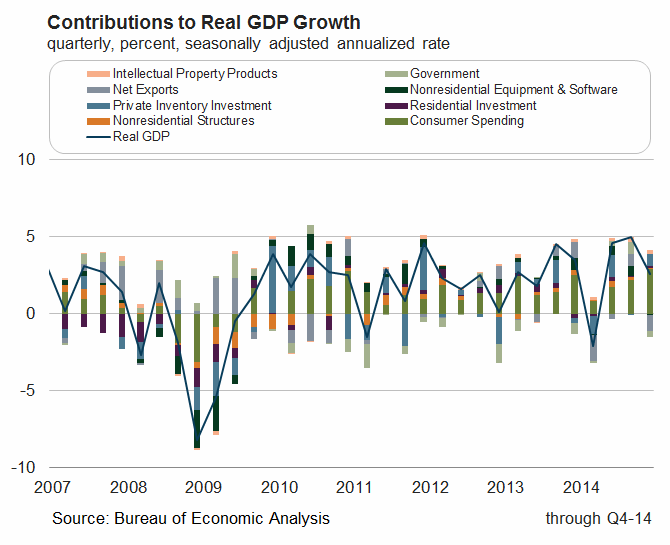Its not very often that one
gets what one wants in life, and politics is by far no exception. A strong
dollar looks and sounds good from a strategic and rhetorical standpoint, but in
real terms the outcomes are not always so romantic. Looking at contributions to
real Gross Domestic Product (GDP) growth, which is an economic indicator
compiled by the Bureau of Economic Analysis (BEA), two components stand out as
having a negative impact on Real GDP growth on a quarter-on-quarter basis. Both
net exports and government [spending] are down. First, net exports are down as
result of an appreciating dollar that has been making domestic goods and
services more expensive relative to foreign equivalents. Second, government
spending is self-explanatory, as it simply spends less.
These ideologies are appealing on paper and in speeches, but
in the real world they leave the US with a losing hand in globalized trade. US
investors also lose the net gain from repatriating returns on foreign
denominated investments that occurs when cheaper dollars bought back than were
sold at the time of the initial investment. Cuts in government spending that
free up productive capacity that the market cannot fill tends to cause the
price of marginal units of productive capacity to fall; we see this overall
effect in Real GDP, wages, and inflation expectations. There’s a time and a
place for everything – or so it is said – and the US economy is the place where
a globally- traded currency can appreciate with little detriment vis-a´-vis its
peers. The time however, is not favorable for fiscal policies that increase
rather than decrease excess productive capacity in the US economy. At least not
in conjunction with the tightening monetary policy aspirations of the Federal
Reserve System.


No comments:
Post a Comment